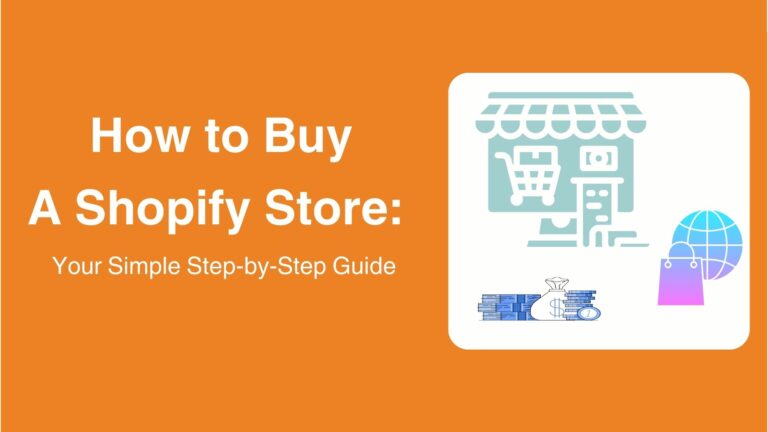To buy a shopify store is an avenue many entrepreneurs take to quickly step into the e-commerce space. While starting from scratch has its benefits, purchasing an existing store can save you time and provide immediate cash flow depending on the store’s performance. Doing your homework is essential to ensure you’re making a smart investment, which includes understanding the history, financial health, and potential of the store you’re considering.
Navigating the marketplace for Shopify stores is similar to real estate – it’s about location, valuation, and future potential. As with any significant purchase, evaluating the pros and cons is vital. A prebuilt or mature Shopify store may come with established traffic and revenue, but it’s essential to weigh the investment against the cost of possibly outdated branding or inventory that may not align with your vision. After selecting a store to buy, familiarize yourself with the different types of purchase agreements and platforms available to mediate the transaction, as well as the steps to assess and finalize the purchase effectively.
Key Takeaways
- Purchasing an existing Shopify store can provide immediate cash flow and save time.
- Careful evaluation of an online store’s performance and potential is crucial before buying.
- Understanding the nuances of purchase agreements and post-purchase steps is key to a smooth transition.

Understanding the Marketplace
In the journey to claim your stake in the e-commerce world, buying an existing Shopify store can be a smart move. You’ll be stepping into an established marketplace with a ready-to-go online store.
Reasons to Buy a Shopify Store
- Time Efficiency: Instead of starting from scratch, purchasing an existing Shopify store means you’re acquiring a business that’s already operational. This can save you considerable time in setup and development.
- Proven Track Record: An established Shopify store often comes with a history of traffic and sales. This data can help you make informed decisions and strategies for growth.
Evaluating the Types of Shopify Stores for Sale
- Niche vs. General: Decide whether a niche store focusing on a specific market segment or a general store with a wider range of products suits your business goals.
- Revenue Streams: Assess the store’s revenue sources. Look for stores that have a diversified income, reducing the risk of being overly reliant on a single product or marketing channel.
Remember to thoroughly research the Shopify store’s history, understand its financial health, and prepare for a clear legal transfer of ownership.

Factors to Consider Before Buying a Prebuilt Shopify Store
When you’re considering the purchase of a prebuilt or mature Shopify store, there are essential factors to keep in mind. These include the store’s established social media presence, existing customer base, and financial history, all of which can significantly impact the future success of your business.
In assessing a store for acquisition, delve into its social media presence on platforms like Facebook, Instagram, Twitter, and Pinterest. Scrutinize metrics such as follower count, engagement levels, and overall brand reputation. This analysis provides insights into audience interest and the potential for customer retention, vital for a successful transition post-acquisition.
2. Strategic Insights from Customer Base Analysis
Gain valuable insights by analyzing the store’s existing customer base, including email lists, demographics, and purchase history. This data serves as a foundation for tailoring targeted marketing strategies, understanding customer preferences, and optimizing brand positioning. Utilize these insights to drive growth and enhance customer relationships after acquiring the store.
3. Ensuring Financial Viability through Thorough Accounting Review
Prioritize a comprehensive review of financial records, including profit and loss statements, tax returns, and audited financial statements spanning the last three years. Evaluate key financial ratios, working capital, and cash flow to ascertain the store’s financial stability and potential for sustainable operations post-acquisition. This diligent analysis mitigates risks and ensures a smooth transition into ownership.
Transaction Types and Platforms
When it comes to buy a Shopify store, you’ll come across various avenues to make your investment. The platforms you choose can range from online marketplaces that list multiple businesses to one-on-one dealings with brokers. Each of these channels comes with its distinct processes, security levels, and types of stores available.
Flippa
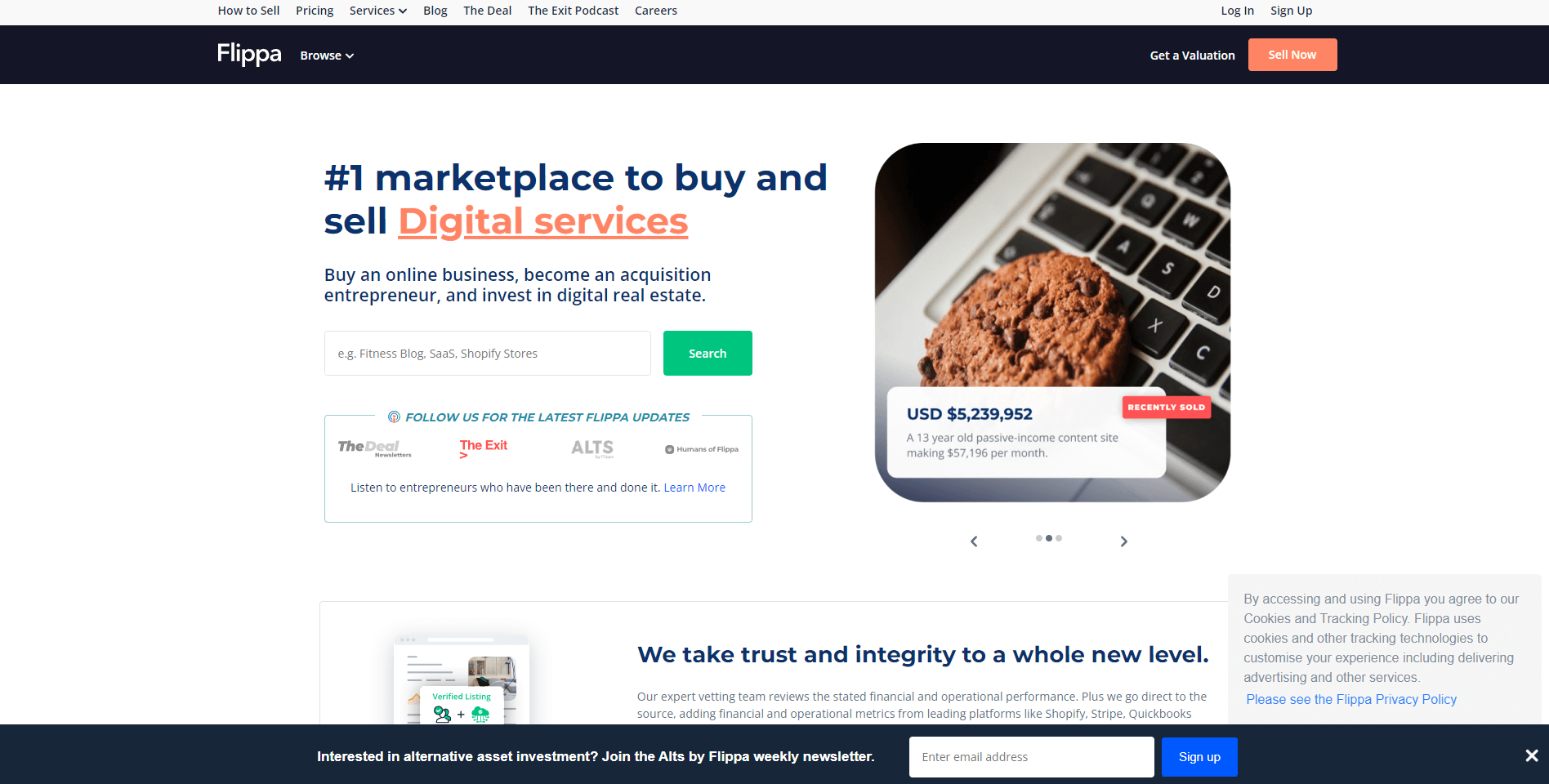
Flippa is a robust online marketplace where you can find a variety of Shopify stores for sale. It’s known for a user-friendly interface that lets you filter stores based on revenue, profit, and industry. When you select a store on Flippa, check the seller’s reputation and store performance history carefully to ensure a valuable purchase.
Empire Flippers
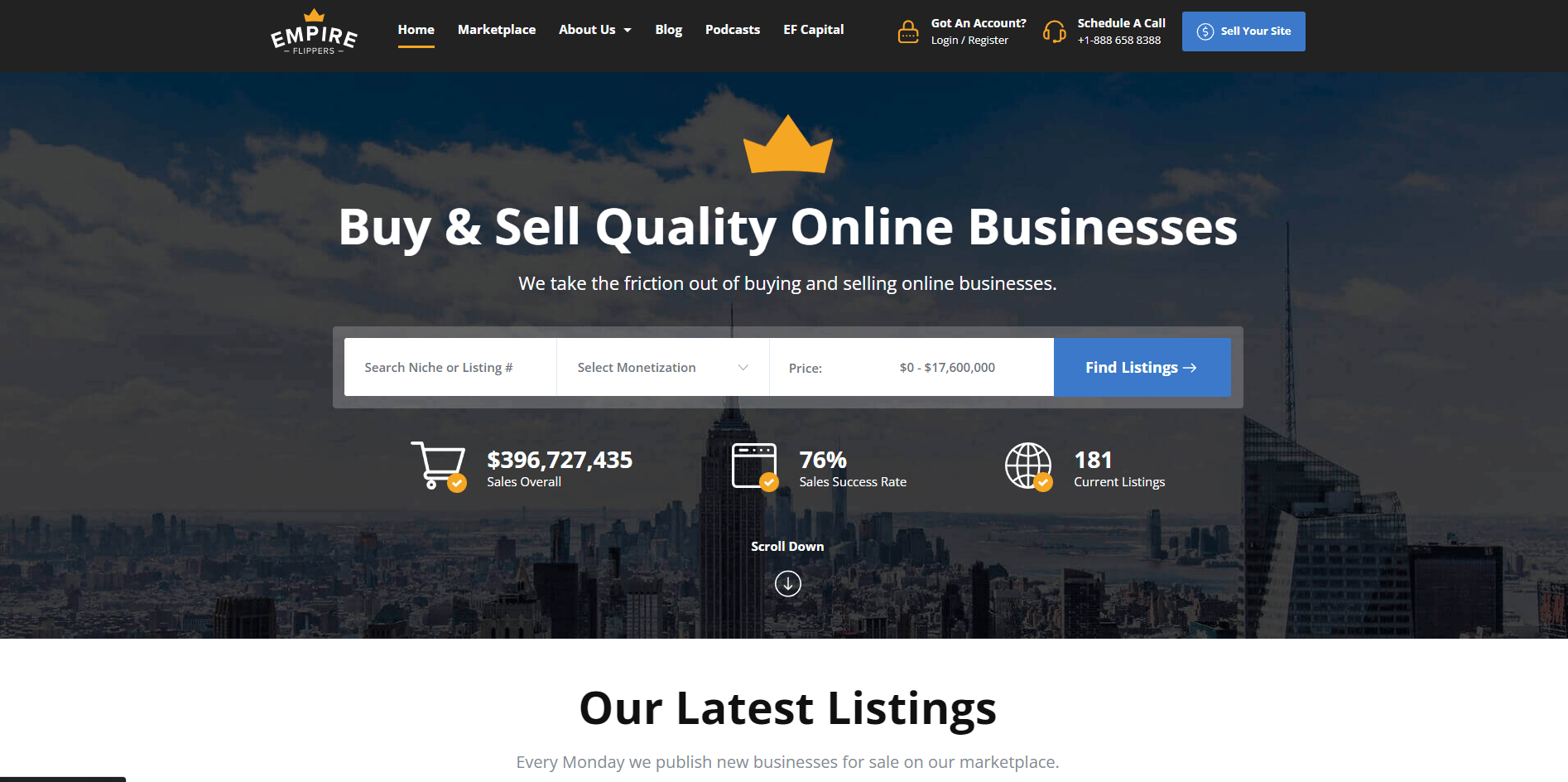
With Empire Flippers, you get a platform that vets each business before listing, offering an additional layer of security. They specialize in brokering higher-quality, established online businesses. Here, due diligence is paramount, so ensure you review the detailed information they provide on each Shopify store.
BuySellEmpire
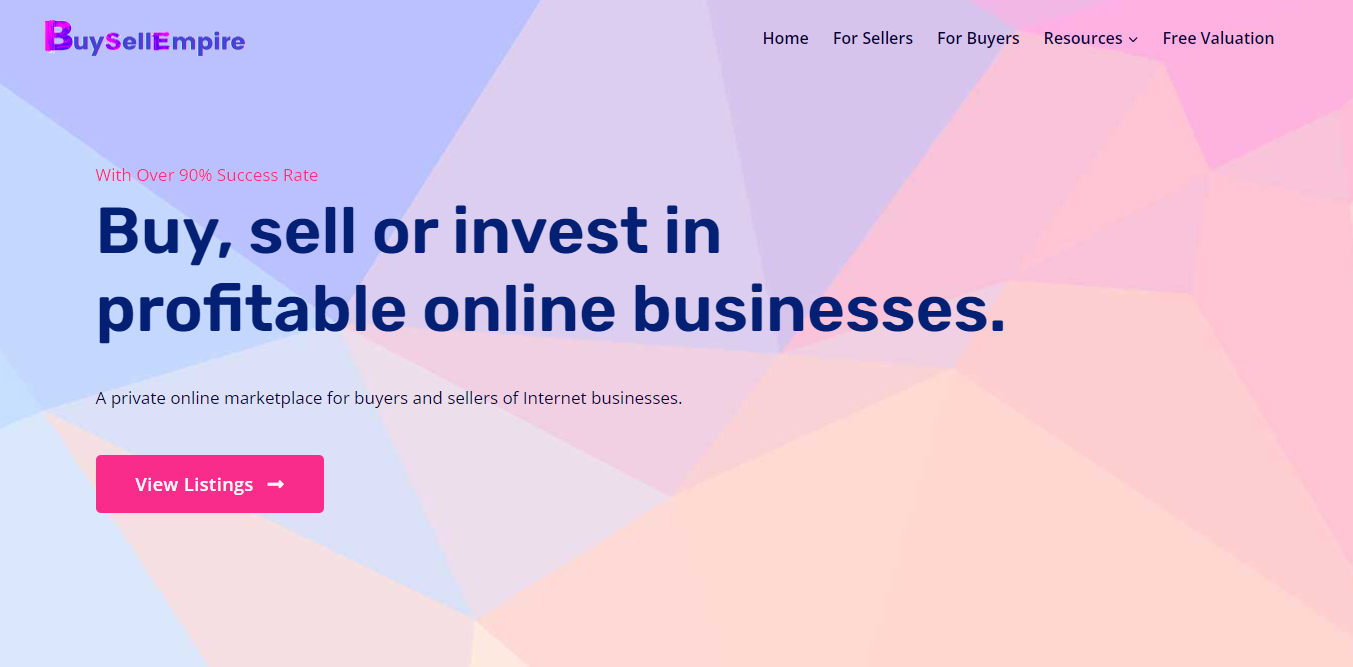
BuySellEmpire is your one-stop destination for online business transactions. Browse a diverse marketplace featuring Shopify stores and niche affiliate websites. Whether you’re buying or selling, this platform streamlines digital deals, connecting entrepreneurs with profitable ventures and ready buyers. It’s where dreams become transactions, offering an easy way to start your online business journey or sell your own successful venture. With BuySellEmpire, seizing digital opportunities is effortless.
Upwork
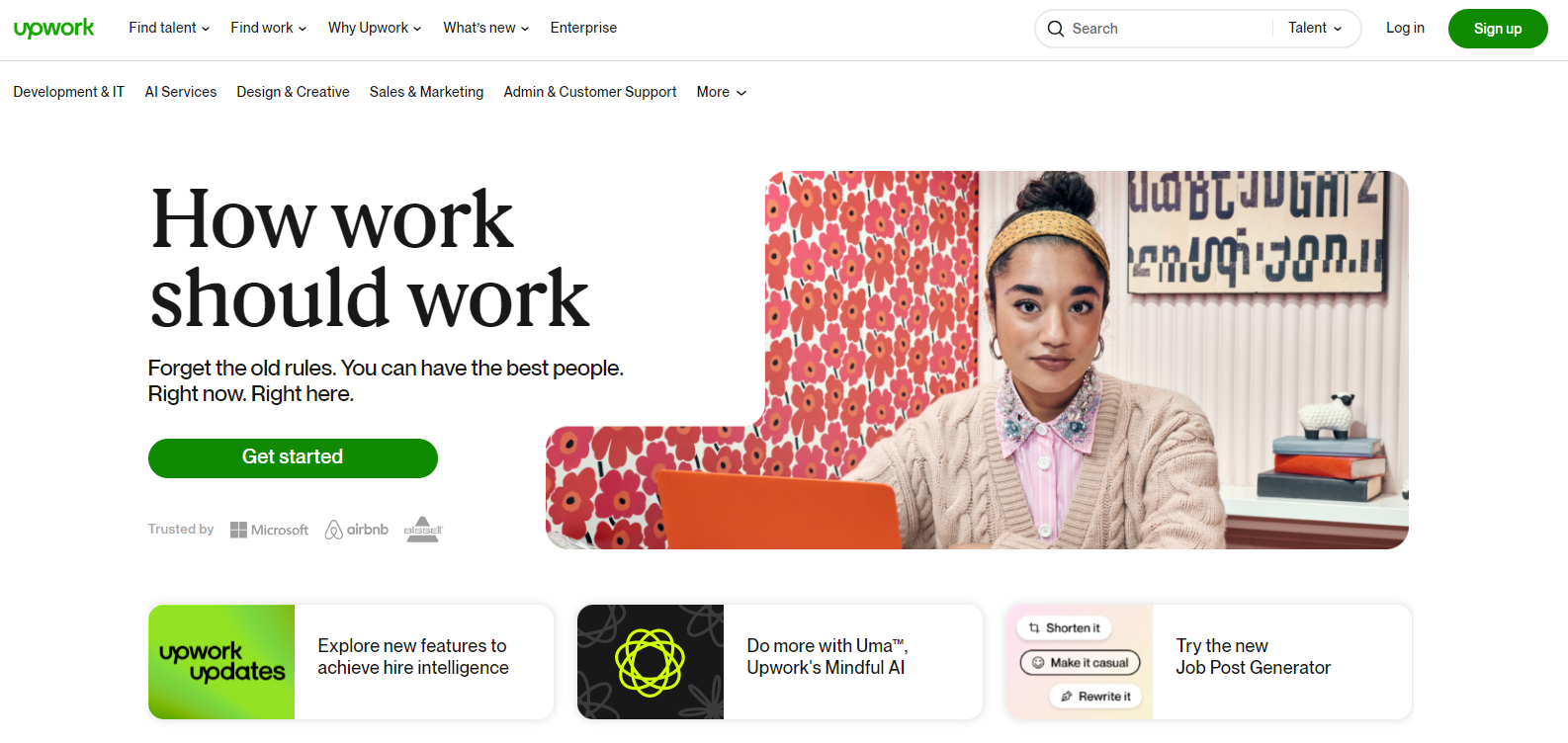
Upwork is not a marketplace for buying stores directly, but it’s an excellent place to find professionals who can help with the acquisition process or with post-purchase store management. On Upwork, engage with freelance experts who have a proven track record to aid in your investment decisions.
Fiverr
Fiverr Plus could be your destination if you’re looking to build a Shopify dropshipping store from scratch with the help of seasoned freelancers. A simple search for “Build Shopify Dropshipping Store” will reveal a list of sellers who can create a store tailored to your needs.
Brokers
Brokers bring seasoned expertise to the table, which can be invaluable when seeking an established business. They can streamline the process, ensure legitimacy, and provide a curated list of businesses that match your criteria. For someone looking to see all options in one location, consider business marketplaces like BizBuySell or Acquire, which consolidate various listings.
Assess and Purchase
Embarking on the journey to buy a Shopify store requires a strategic approach in assessing its value and navigating through the purchase process. Here’s how you can pinpoint the business’s worth and ensure your financial readiness for a successful transaction.
Value the Business
Determining the fair market value of the Shopify store is essential. Inspect the store’s financial performance and assess the quality of inbound links. Remember, a diverse traffic source can significantly elevate the store’s valuation. The value you arrive at will serve as a solid foundation for any price negotiations.

Negotiate Price
Armed with your valuation, engage with the seller to negotiate the selling price. Be prepared to discuss terms and justify the offer based on your findings. The listed price is a starting point, but there’s often room to negotiate for a deal that reflects the true value of the business and the terms of payment you are comfortable with.
Get Your Cash Ready or Fundraise
You have a variety of financing options, from traditional bank loans to online lending platforms or possibly Small Business Administration loans. Some sellers may offer owner financing or earn-out agreements. The ideal financing method will depend on the asking price, your available capital, and your risk profile. Choose wisely to align with your financial strategy.
Post-Purchase Actions
Once you’ve successfully purchased a Shopify store, your main focus should be on a smooth transition and setting strong foundations for growth. There are critical steps to take that will help you hit the ground running.
Transitioning Ownership and Operations
Your first step is to officially transfer the ownership of all associated assets. This includes the domain name, any relevant software, and, very importantly, the Shopify account itself. Organize access to all operational tools and platforms that are crucial for running the business. Make sure to update any contact information to reflect the new management.
It’s also vital to get a full understanding of the existing inventory—you’ll need to know exactly what you have in stock, what’s on order, and what might need to be replenished soon. Additionally, reach out to suppliers to establish a relationship and confirm you’ll continue business with them.
Begin familiarizing yourself with the customer base. You’ll want to grasp the customer demographics and purchase behavior quickly. If an email list has been part of the purchase, review it for segmentation opportunities to start personalizing communication immediately.

Developing Marketing and Growth Strategies
After you’ve established control, your attention should shift to marketing and growth. Audit the current marketing strategies and identify what has been effective. You then can build on successful tactics with fresh content and branding initiatives that stay true to what customers already love about the store.
Consider the potential for scaling social media accounts. These are invaluable for generating traffic and nurturing a relationship with your customers. Developing a content calendar can help maintain a regular posting schedule and ensure that your content aligns with your overall marketing strategy.
To capture immediate growth potential, analyze the data from past traffic and sales figures. This will help you understand peak sales periods and products that are in high demand. Use this insight to create targeted campaigns that can encourage repeat business and attract new customers.
By closely monitoring these aspects and taking calculated actions, you can set your new business on a promising path to growth and success. Remember, listening to your customer base is key to understanding the future direction of your business.

Frequently Asked Questions
What steps should I follow to purchase a Shopify store?
To purchase a Shopify store, start by researching the market and identifying your niche. Then, evaluate the stores available for sale on marketplaces like Shopify Exchange. Next, carry out due diligence on your chosen store to ensure its financials are in order. Finally, work through the transaction process methodically, which typically involves transferring ownership, assets, and any necessary training.
Are there any tips for buying a dropshipping store on Shopify?
When buying a dropshipping store on Shopify, it’s crucial to assess the supply chain reliability, understand the profit margins, and look into the customer satisfaction levels. Examine the store’s traffic sources and their sustainability to ensure consistent sales in the future.
How do I determine if a Shopify store is profitable before purchasing?
To determine if a Shopify store is profitable, analyze its financial statements, customer acquisition costs, and historical sales data. Also, review its website traffic and conversion rates as these metrics can provide insights into potential earnings.
